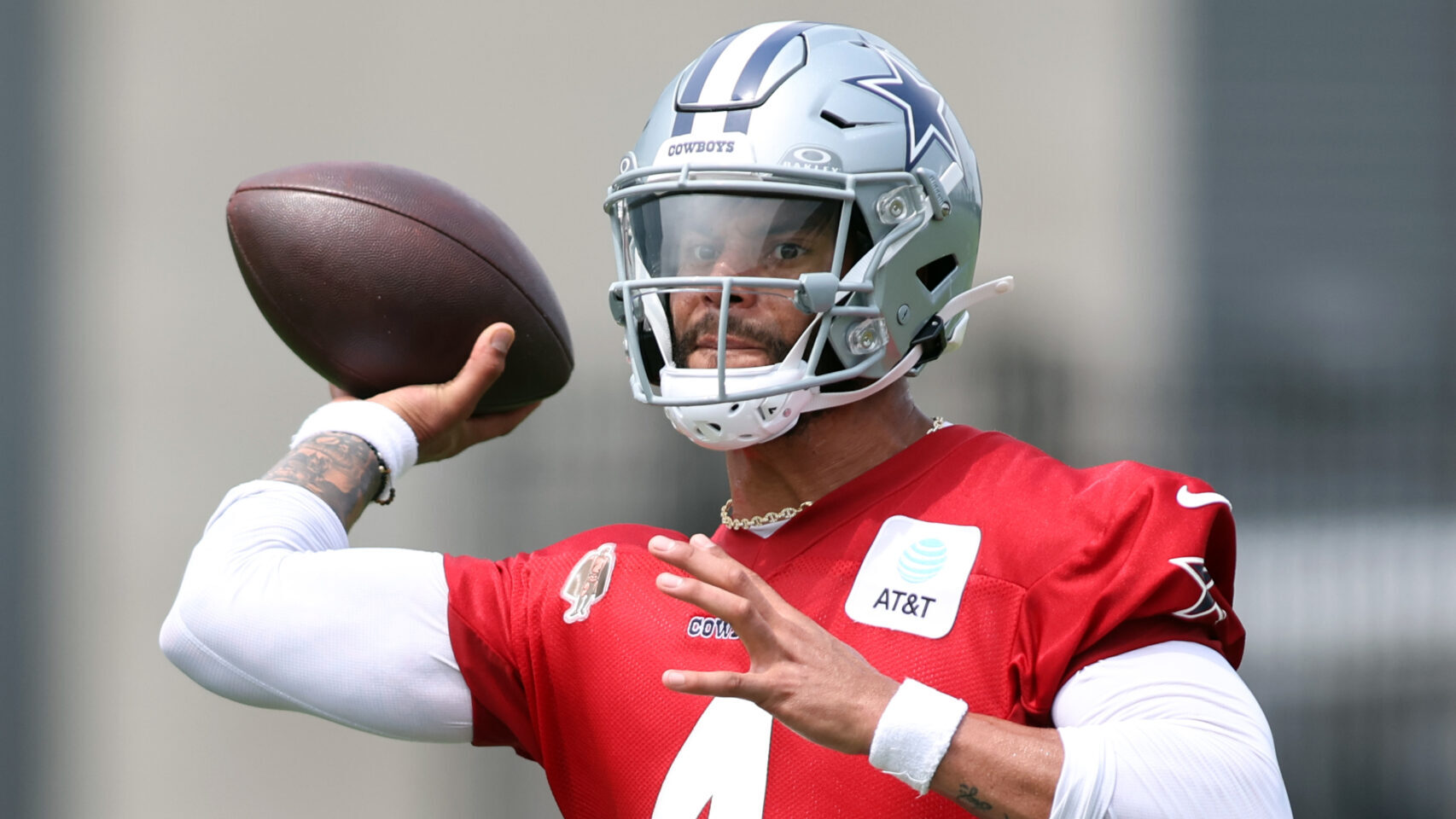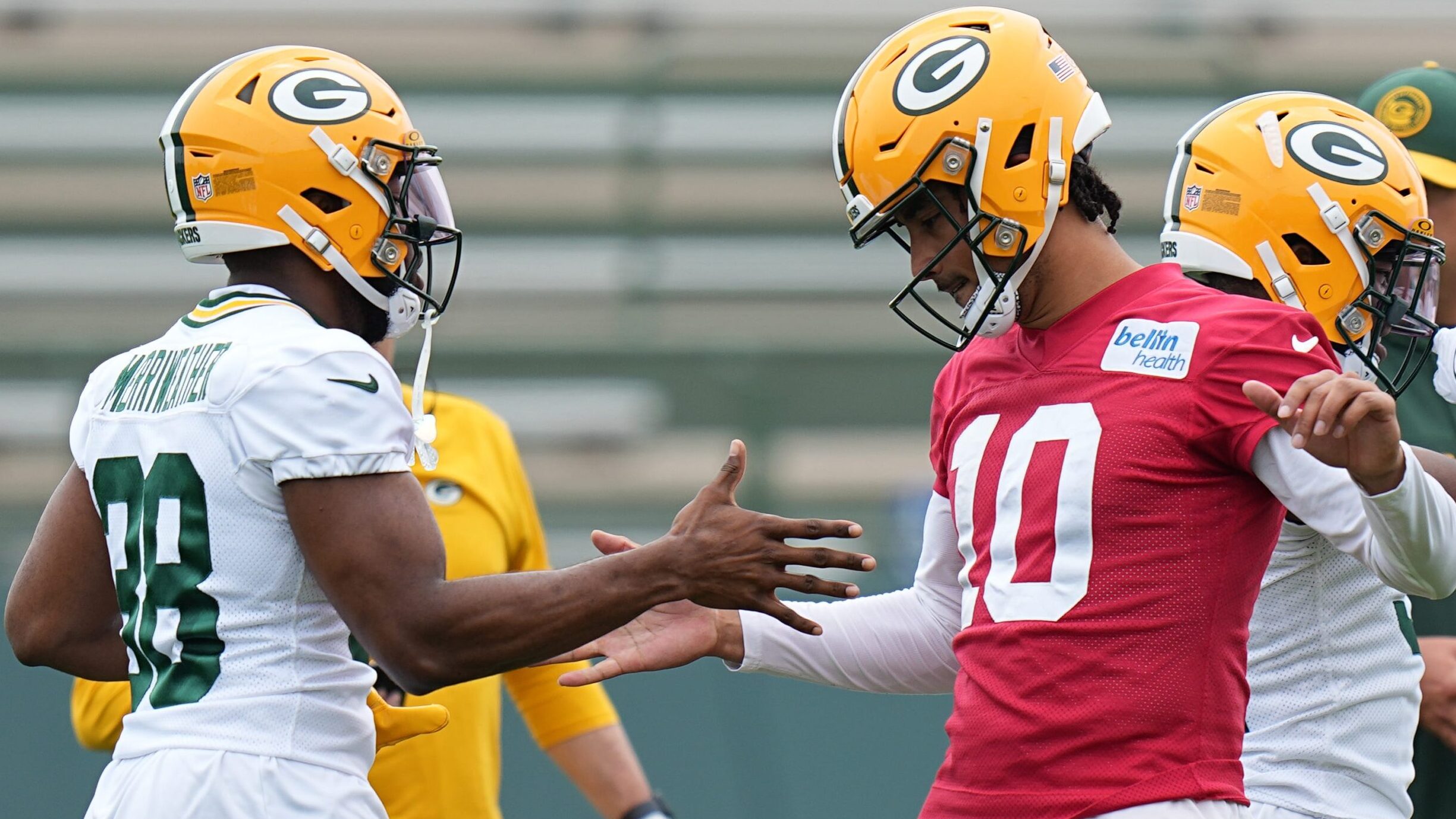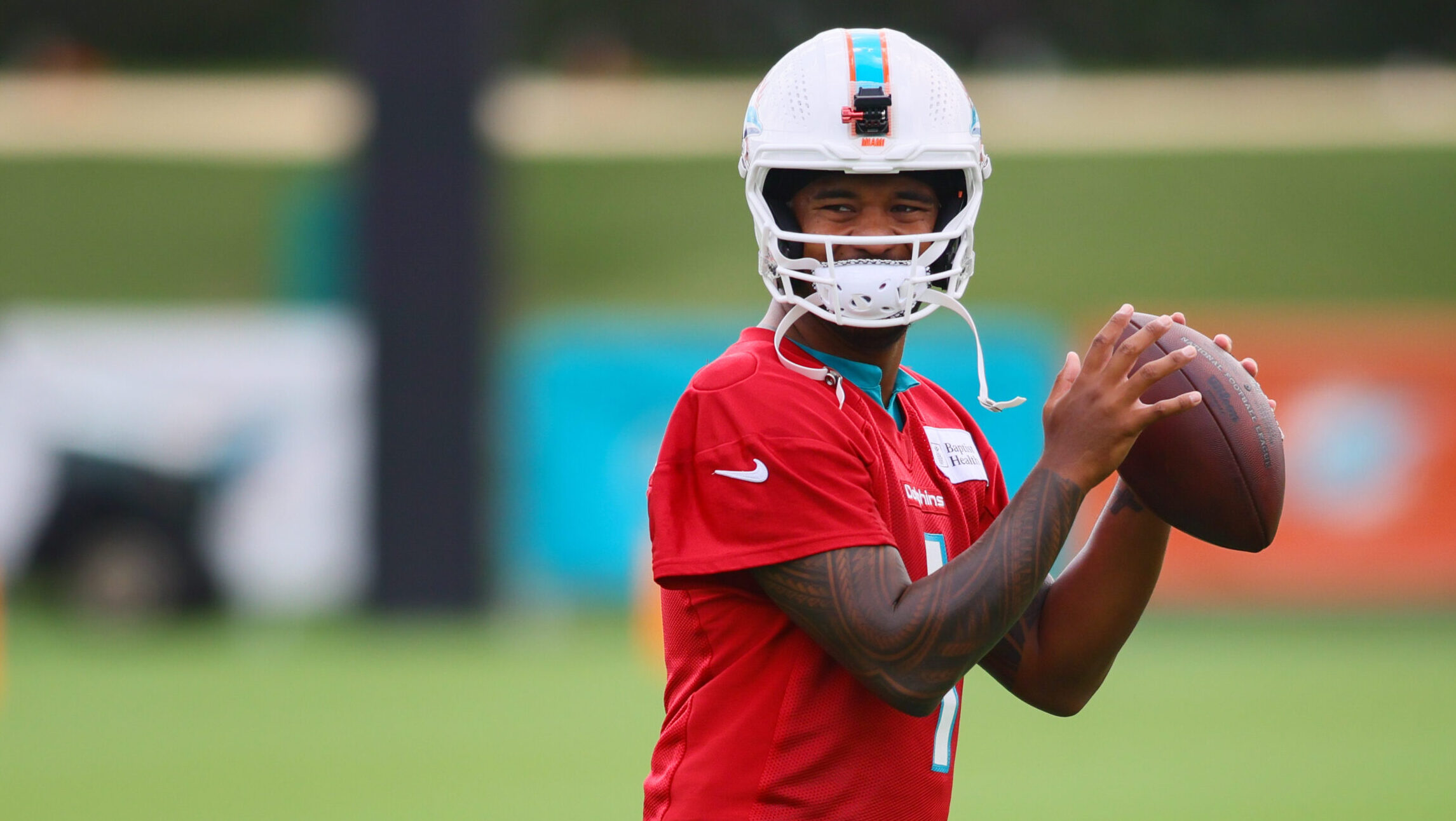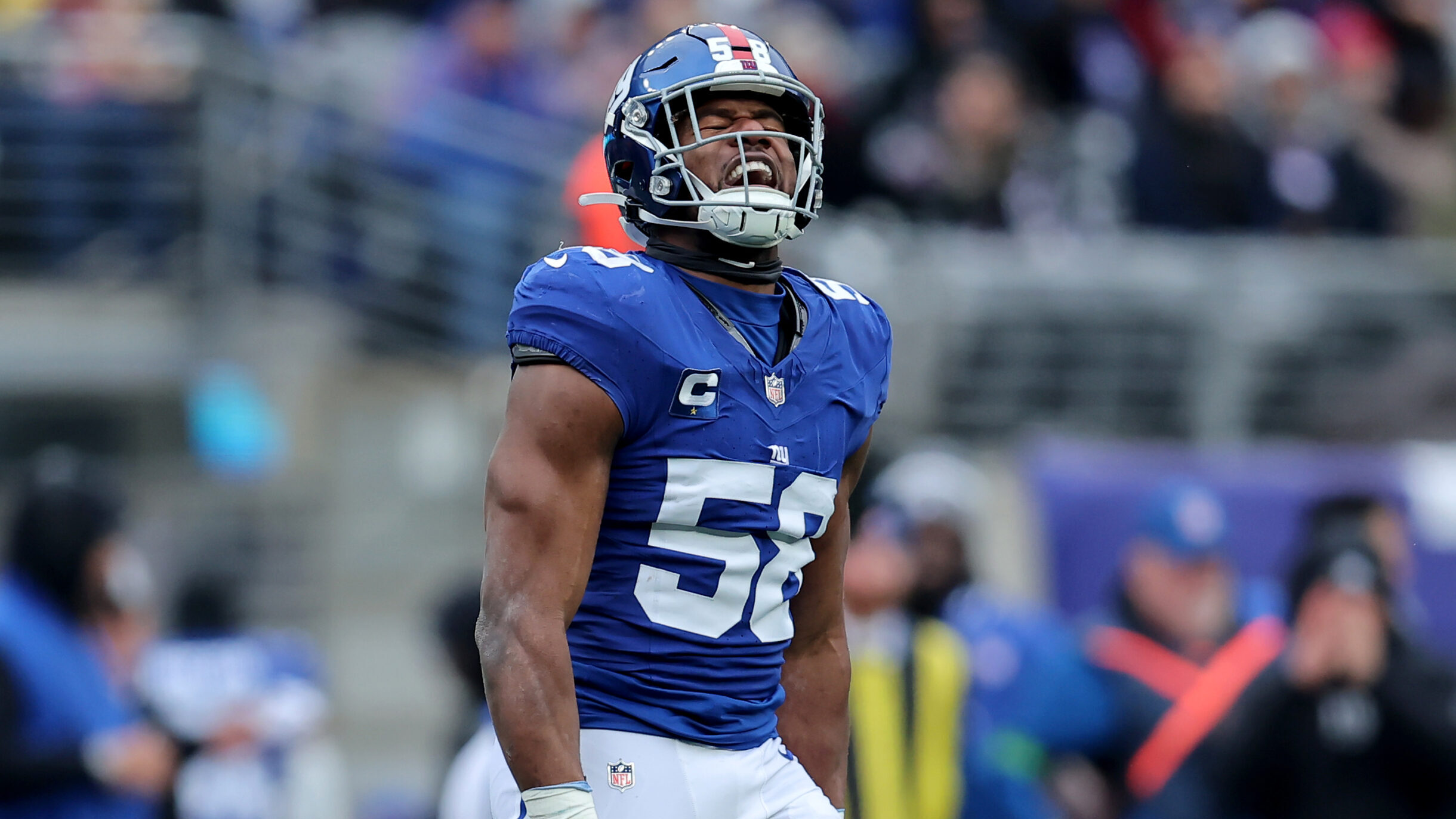Analysis
5/22/22
15 min read
Best Remaining Free Agents at Every Position
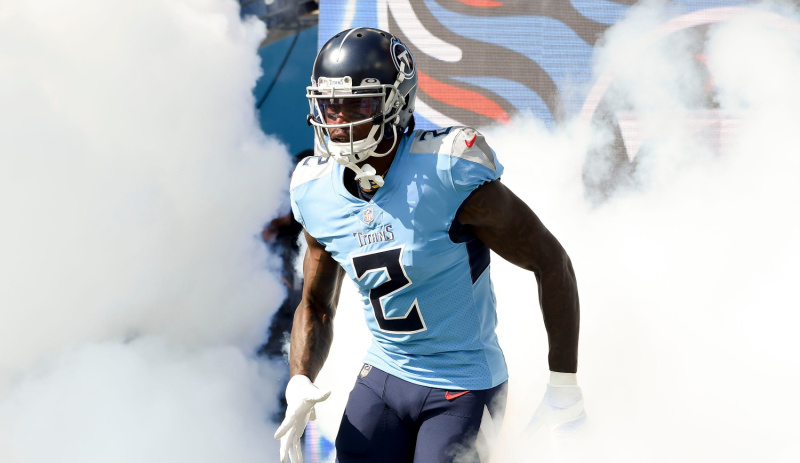
With the NFL Draft almost a month in the rear view and rookie minicamps wrapped up, NFL teams have all but fully assembled their 90-man training camp rosters. While this time of year is filled with optimism for most teams and fans, teams are still considering tinkering with the end of their roster and will consider bringing in some of the remaining free agents as training camp begins and injuries occur.
With a generous handful of potential impact players still looking for a home for the 2022 season, we’ve assembled a list of the best free agents remaining at every position:
Offense
QB: Ryan Fitzpatrick
The options here were limited to Fitzmagic and his tendency to shred NFC South opponents while turning the ball over at an alarming rate against most anyone else or Cam Newton and his dwindling rushing prowess and stagnant passing ability.
On one hand, you have a signal-caller capable of managing football games at a functional yet uninspiring level. On the other, you have a former NFL MVP who once struck fear into the hearts of his opponents, but that fear is all but gone.
In the modern NFL, having a quarterback with a wildly inconsistent arm is an absolute death knell only mitigated by possessing elite level rushing talent, which Newton lost years ago. If Fitzpatrick could replicate his 2019 season, he could easily slide into a starting spot somewhere. Newton comes with more contingencies. Speaking of which, do not forget that Ryan Fitzpatrick can bring it on the ground too.
A brief reminder that Ryan Fitzpatrick led the Dolphins in rushing in 2019... with 243 yards. pic.twitter.com/2fqiA46H83
— NFL on CBS 🏈 (@NFLonCBS) May 11, 2022
RB: Justin Jackson
Jackson has been a career understudy for the Chargers since they selected him with the 251st overall pick in the 2018 NFL Draft. That is not to say that he has failed to produce in his minimal role. On several occasions (seven times, to be exact), Jackson filled in as a spot-start in place of the Chargers’ more established backs. Jackson averaged 4.5 yards per carry and scored three touchdowns in those games.
However, Jackson’s best moments have come in a “change-of-pace” role. Since 2018, Jackson has averaged 5.0 yards per carry and 7.8 yards per reception. Jackson posted the second highest PFF-rushing grade in 2019, behind only Nick Chubb’s 1,494-yard, eight-touchdown campaign. Jackson had the third-highest breakaway % among running backs with at least 25 attempts, and Jackson had the third-highest breakaway % (percentage of designed runs that gain 15 yards or more).
Overall, Jackson appears to be the running back most primed to contribute among those on the market, with untapped potential to boot.
Justin Jackson puts the @chargers in front! #BoltUp
📺: #LACvsHOU on CBS
📱: NFL app pic.twitter.com/5sAGaDFIyz— NFL (@NFL) December 26, 2021
WR1: Odell Beckham Jr.
OBJ does not require much of an introduction. After garnering a Super Bowl ring with the Los Angeles Rams this past February, Beckham is looking for his next landing spot. Still in the prime of his career at 29 years old, he can immediately upgrade most, if not all, receiving groups in the NFL today.
As evidenced by his five-touchdown surge between Week 12 and 17 following his release and timely signing, Beckham still has something left in the tank. Not to mention, Beckham was on pace for a massive performance in the Super Bowl before his deflating injury. If extrapolated to a whole game, Beckham’s bottom line would be about five catches for 125 yards and a touchdown (maybe even a second). Two weeks prior, in the NFC Championship Game, Beckham also reeled in 9 catches for 113 yards.
The problem? Injuries. He tore his ACL during the first half of the big game, and the impediment is likely giving teams pause. After all, it is possible that he does not play a snap in 2022. The cost-benefit analysis for next season seems stacked against him in the eyes of NFL front offices.
Still, Beckham is as talented as they come at wideout and could come at a tremendous value in a market that has exploded since March. While he may not make some of the plays he used to, OBJ can still beat the man across from him; or, at the very least, relieve some defensive pressure on other offensive weapons.
Odell Beckham Jr touchdowns this season:
In six games with the Browns - 0
In one Super Bowl QUARTER with the Rams - 1 pic.twitter.com/6bY6eLvyDD
— NFL on CBS 🏈 (@NFLonCBS) February 14, 2022
WR2: Julio Jones
Like his All-FA counterpart, Beckham Jr., Jones was recently dominant and arguably the best receiver in the NFL. It was a deep drop-off in production for Jones as he transitioned to Tennessee. In 2020, Jones produced at a high level despite playing in only nine games. Jones averaged 85.6 yards per game and 15.1 yards per reception, suggesting that he was still within WR1 territory.
The move to Nashville and Jones’s subsequent decline was precipitous. The combination of new scenery and nagging injuries proved troublesome for the former 6th overall pick. In 11 games with the Titans, Jones caught 69.8% of his passes for 496 yards and one touchdown. Jones’ per game receiving average declined 47.3% to 45.1 yards per game, and he posted the lowest PFF season grade since his rookie year.
However, he is not yet an objectionable starting option on the boundary—especially where there is an insatiable shortage of opposite receivers. A school of thought draws up his season as a statistical anomaly in an offense that was not compatible with Jones’s specialties. At worst, Jones will be able to find the soft spot in zone coverages to provide a security blanket for a developing quarterback, reminiscent of Larry Fitzgerald’s last two years.
INSANE CATCH 🤯 @juliojones_11
📺: Watch #TENvsSEA on @NFLonCBS pic.twitter.com/ojSjsE2elm
— Tennessee Titans (@Titans) September 19, 2021
TE: Rob Gronkowski
Gronkowski allegedly only signed with the Buccaneers in 2020 “to block.” After O.J. Howard’s Achilles injury in 2020, Gronkowski climbed the depth chart and provided receiving value in a big way. In the 12 games following O.J. Howard’s departure to IR, Gronkowski reeled in 34 receptions for 535 yards and seven touchdowns. In Super Bowl LV, Gronkowski caught two touchdowns in the memorable blowout.
In 2021, Gronkowski continued on a resurgent trajectory. He collected 55 receptions on 89 targets for 802 yards and six touchdowns. Gronkowski was one of the league’s best at the ripe age of 32. The totals are especially impressive, considering he only played 12 games last season. Extrapolated to a whole season, Gronkowski would have had 78 receptions for 1,136 yards and eight touchdowns. Those reception, yardage, and touchdown totals would have been in the top five of all tight ends last year. He had PFF’s support, too. His 86.7 PFF-receiving grade was fourth highest in the league, one spot above Travis Kelce.
Happy 33rd birthday to @RobGronkowski 🎂
⭐ 4x Super Bowl Champion
⭐ 6x Conference Champion
⭐ 4x All-Pro
⭐ 5x Pro-Bowl
⭐ Comeback Player of the Year
⭐ 2010s All-Decade Team
⭐ 100th Anniversary All-Time Team
⭐ Most receiving TDs in a season by a TEpic.twitter.com/JqDY6fbc9B— Dov Kleiman (@NFL_DovKleiman) May 14, 2022
OT: Duane Brown
After more than four years with the club, the longtime Houston Texan may depart from Pete Carrol and the Seahawks this offseason. In his first season with the team after they traded for him, Brown made his fourth Pro Bowl.
This past season, Brown made his fifth Pro Bowl appearance despite allowing the second-most sacks of his career and posting bottom three PFF run-blocking and PFF pass-blocking grades for his career. Still, Brown projects as a solid starting option on the left side.
Many teams would welcome the veteran presence and the stability he brings to the table. Nonetheless, Brown’s performance declined in 2021 after a relatively dominant 2020 where Brown was top ten in PFF-season grade among all tackles and top 15 in PFF Pass-Blocking Efficiency. The down season should not cause hesitation.
I already wrote about who I thought were the most underrated OL at each position in 2020, but am going back & watching every snap of one of those guys now..which is only confirming my initial thought: Seahawks LT Duane Brown is a STUD.
Video preview:https://t.co/B3ZDzyw95r pic.twitter.com/Ferf2GnIFe
— Brandon Thorn (@BrandonThornNFL) June 21, 2021
OT: Eric Fisher
The former first overall pick and two-time Pro Bowler is on the market after a short, one-year stint with the Colts. Fisher tied his career-high in sacks allowed in 2021, but the Colts thrived on the ground. Accordingly, Fisher’s 73.3 PFF run-blocking grade was in the top 15 tackles with at least 800 snaps and the second-highest mark of his career.
Fisher may not be a stalwart, but his blocking should be serviceable. At worst, Fisher is a stop-gap blocker while a team finds younger, more talented offensive lineman via the draft, trade, or free agency in the meantime.
IOL: Quinton Spain
Spain hits the market after contributing to Cincinnati’s unheralded Super Bowl season. Although the Bengals had their fair share of issues along the offensive line, Spain is a starting-caliber guard in the NFL and proved it last year.
Spain’s 97.5 pass-blocking efficiency tied for 15th in the league among guards with at least 1,000 snaps. There are some glaring errors on Spain’s tape, but that is not uncommon. Spain received criticism for allowing a sack on the last play of the Super Bowl, but he was matched up one-on-one with one of the game’s most elite pass rushers in Aaron Donald.
Overall, Spain likely will not be perfect in pass protection. Though, he will benefit most offenses’ run game immediately. Of the 30 guards who played on 400 run snaps or more, Spain ranks 12th in PFF run-block grade, one spot behind KC guard Joe Thuney and ahead of his potential replacement in Alex Cappa. Some teams could use his services, and he is one of the best interior linemen on the market.
IOL: J.C. Tretter
Tretter was a mid-March cap casualty but remains a quality option at center. Among interior linemen with at least 400 snaps in 2021, Tretter’s 78.7 PFF-season grade marked 14th in the league.
The Browns' run game has been churning the past two seasons in no small part to Tretter’s contributions. In pass sets, Tretter is among the elite. Corey Linsley was the only center with at least 900 snaps to allow fewer pressures than Tretter last season. Linsley and Creed Humphrey were the only two centers with at least 900 snaps above Tretter’s 99.0 pass-block efficiency rating.
This is all to say that Tretter is the kind of player who can instantly solidify an offensive line's interior when he inks a deal. Tretter is one of the top options still on the market among offensive linemen, which puts him squarely in this slot.
J.C. Tretter since 2019:
🔸 1,601 pass-blocking snaps
🔸 0 QB hits allowed pic.twitter.com/FsIYFFoIQu— PFF (@PFF) November 24, 2021
IOL: Daryl Williams
A former Panthers fourth-round pick, Williams only started in more than ten games twice in his five seasons with Carolina. The transition to Buffalo appeared to benefit both Williams and teammate Josh Allen. In 2020, Williams posted his career-best 80.0 PFF pass-block grade and 97.4 pass-blocking efficiency. Among all tackles with at least 650 pass snaps, Williams’s 80.0 was the fifth highest, and Williams allowed the third-fewest pressures. In the meantime, Allen enjoyed a meteoric rise.
In 2021, Williams played both correct tackle and right guard. Although his play declined statistically, Williams’s 2020 season proved that he could provide quality reps at tackle, and his 2021 season proved he could ball inside too.
A player the Jags should look at is Daryl Williams. Williams can play Guard or Tackle, hasn’t missed a game in three years or a start in two. He’s coming from a big offense in Buffalo and in 2020 he graded as a top 20 Guard on PFF at 79%. He’s also only 29 years old. #Jaguars
— Clay Harbor (@clayharbs82) May 10, 2022
Defense
EDGE: Carlos Dunlap
Cincinnati traded Dunlap to Seattle during the 2020 season after spending almost 11 seasons with the team. Dunlap immediately imposed himself on opposing offenses after the trade. From Week 9 to Week 17, Dunlap recorded seven sacks and 31 pressures.
Dunlap can provide pressure from the edge and has a knack for disrupting plays. In 2021, Dunlap started the season slowly but collected eight sacks from Week 15 to Week 18. All the while, Dunlap tied for second in the NFL with six batted passes.
Carlos Dunlap calls GAMEpic.twitter.com/F9t92cauGG
— PFF (@PFF) November 20, 2020
IDL: Larry Ogunjobi
Ogunjobi appeared to be one of the first free agents signed in March, but a failed physical muddied the waters and disintegrated his deal with Chicago. It remains to be seen what caused him to fail the examination, but Ogunjobi is a good football player regardless.
Ogunjobi played a key role in the Bengals’ late-season defensive revival. His eight sacks tied for 7th among interior defensive linemen last season. While Ogunjobi may not be the cornerstone of your defensive line, he can provide quality pass rush snaps from the interior.
DT Larry Ogunjobi to the #Bears
Quicks off the ball — with heavy hands. Firm vs. the run. Interior pass rush ability. Disruptive traits as a 3-Technique in Matt Eberflus’ defense. @NFLMatchup pic.twitter.com/mMst32UmKA
— Matt Bowen (@MattBowen41) March 14, 2022
IDL: Eddie Goldman
Goldman is an interesting free agent because, on the one hand, Goldman was dominant in 2018 and 2019 before sitting out in 2020. However, after his one-year break, Goldman was not the same player.
In 2018, Goldman’s 87.8 PFF run-defense grade was ranked 7th among interior linemen with at least 150 run snaps, and he also logged three sacks. In 2019, Goldman’s stop percentage of 10.2% was tied with Grady Jarrett for sixth among interior defensive linemen with at least 175 run snaps.
Goldman’s 37.4 run-defense grade was 135th out of 150 qualified interior defensive linemen in 2021. To be fair, Goldman dealt with injuries last season, but the performances raised eyebrows for sure. I am betting that he is still the same caliber run stopper he was before 2020.
Eddie Goldman is starting to look like himself again. This push on the C on 3rd & 1 in the 4th Q is a great example. pic.twitter.com/aoHOjE7uUy
— Adam Hoge (@AdamHoge) November 18, 2021
LB: Dont’a Hightower
Hightower has been a Patriot since Patrick Mahomes was in high school. That is subject to change as I am writing this. Hightower posted his lowest PFF-season grade in 2021 and an alarmingly low coverage grade, allowing 34 receptions on 36 targets for 304 yards.
Hightower might have just turned 32, but his coverage skills do not define him and were rarely a strength. He produced the 5th-most pressures among all off-ball linebackers in 2021 and can still make plays in run defense.
The NFL is moving towards rangy off-ball backers that can provide more pass coverage than they do in between the tackles but give me a leader-of-men and old-school thumper in Hightower to lead the team and bring an uncompromising, winning attitude.
Dont'a Hightower reportedly plans to play in 2022. But will it be for the Patriots? https://t.co/Qu6d95JXUT pic.twitter.com/3laLkOcQjd
— Zack Cox (@zm_cox) March 8, 2022
LB: Kwon Alexander
Alexander provides versatility and speed at the linebacker position with aptitude in pass coverage. He put himself on the map in 2016 when he led the NFL in solo tackles and was selected to his first and only Pro Bowl the following year.
Alexander has not racked up tackles since 2017, failing to collect more than 34 solo tackles since his 100+ explosion. That was not the only part of his game, though. The LSU alum has eight interceptions and 22 PBUs in his career too. Alexander fits the bill of the type of athletic, rangy linebackers that teams have liked in recent years and is likely a priority for linebacker-needy teams.
Kwon Alexander lays out for the interception 🔥 @kwon #Saints
📺: #BUFvsNO on NBC
📱: NFL app pic.twitter.com/qGoz0hxyP0— NFL (@NFL) November 26, 2021
CB: Chris Harris Jr.
Harris is turning 33 in June and has shown signs of slowing down, but Harris is still a starting-caliber player in the NFL, particularly in the slot. Harris has played almost exclusively in the slot the past two seasons and has fared well. In 2021, Harris allowed the third-fewest yards among cornerbacks with at least 700 snaps while adding a pick and three PBUs to the bottom line.
Harris is a quality veteran that you can count on to hold his own and play his role effectively and was once one of the stickiest corners in coverage. In 2016 and 2017, Harris was the second highest and the highest, respectively, graded cornerback by PFF. The former All-Pro can surely find a way to elevate a defensive unit.
Lowest yards per target allowed among CBs 2010-19
1. Chris Harris Jr. 6.3
2. Adam Jones 6.6
2. Jimmy Smith 6.6
2. Richard Sherman 6.6 pic.twitter.com/E83lPlNMze— PFF (@PFF) May 12, 2020
CB: A.J. Bouye
Bouye has a similar story to Chris Harris. Both were undrafted free agents, and both experienced a boon with a playoff contender. Unlike his counterpart, though, Bouye played primarily on the boundary during his career. This past season, however, Bouye played 68.3% of his snaps lined up in the slot.
Bouye has rebounded in more manageable roles in the last two seasons after surrendering the ninth-most receiving yards among corners in 2019. In 2020, Bouye allowed the sixth-fewest receiving yards among corners who played at least 400 snaps. Despite playing in only seven games, Bouye disrupted six passes in coverage. In 2021, Bouye allowed the eighth fewest yards among corners with at least 400 snaps. Overall, Bouye has proved that he can still fill a starting role. Let us not forget that before 2019, Bouye was lock down.
How good was A.J. Bouye's 2017 season? Since PFF grading began with the 2006 season, no outside cornerback has allowed a lower NFL passer rating than Bouye did this year! pic.twitter.com/C5YGGRNId9
— PFF (@PFF) January 4, 2018
S: Landon Collins
Collins, a former first-round pick from Alabama, started his career red hot with the Giants. In 2016, Collins earned First-Team All-Pro and Pro Bowl honors in his second season when he intercepted five passes, broke up 13 passes, and notched six sacks. Collins did not record more than two interceptions, 6 PBUs, or two sacks in any season after.
This past season, though, Collins caught two interceptions, sacked the QB three times, and posted the sixth highest PFF run-defense grade in the NFL. Collins has high-caliber talent and possesses unique versatility at the safety position.
Landon Collins is that guy, pal 😤
(via @WashingtonNFL)pic.twitter.com/jKmNoms55O
— NFL on ESPN (@ESPNNFL) August 21, 2021
S: Jaquiski Tartt
Tartt has been a consistent member of the 49ers’ secondary since he was selected in the second round of the 2015 NFL Draft. The former Samford Bulldog can bring it in multiple ways. Tartt had two sacks, 49 tackles, and a forced fumble in his rookie season. That kind of stat line indicates what Tartt can bring to the table.
Tartt can be a surprisingly savvy addition for the right team and is likely the best option on the safety market other than Collins. In 2021, Tartt allowed the fourth-fewest receiving yards among safeties with at least 700 snaps. Since his rookie year, Tartt has not allowed more than 225 yards in a season. Tartt has logged multiple QB pressures in every season but one.
Jaquiski Tartt strips DK at the goal line! 😱
Big turnover for the @49ers defense. #GoNiners @Quaski29
📺: #SEAvsSF on ESPN
📱: NFL app // Yahoo Sports app
Watch free on mobile: https://t.co/SlB0VG2nT7 pic.twitter.com/0Nr5t6ixVM— NFL (@NFL) November 12, 2019

